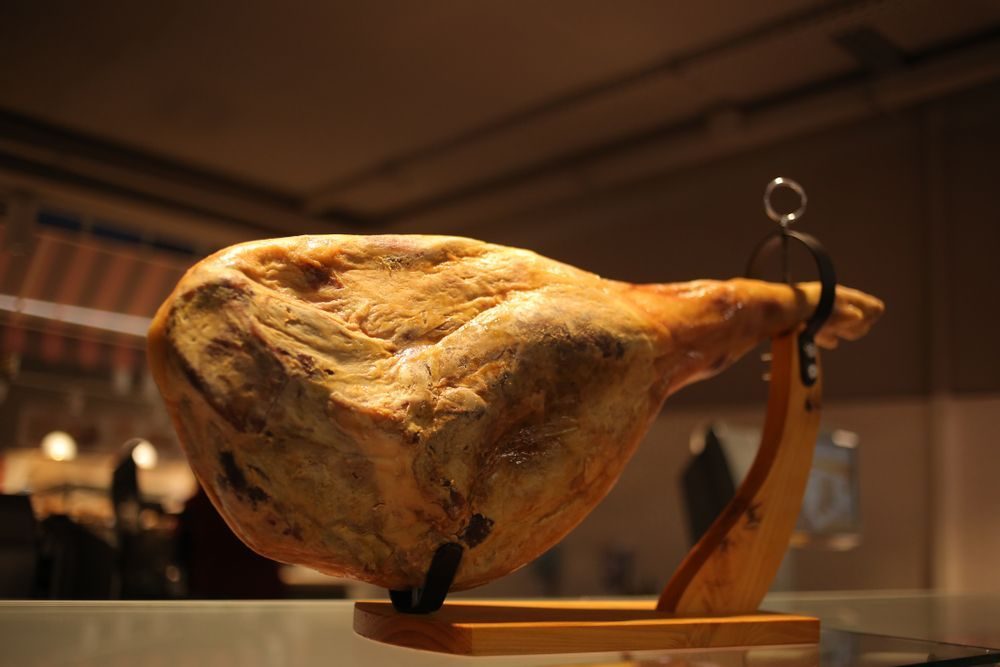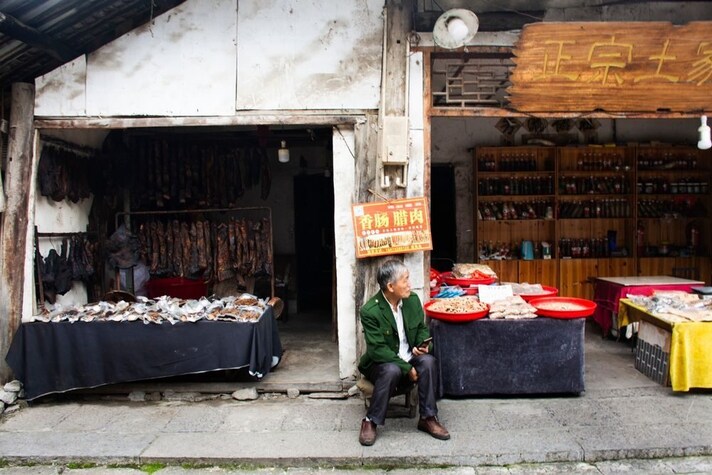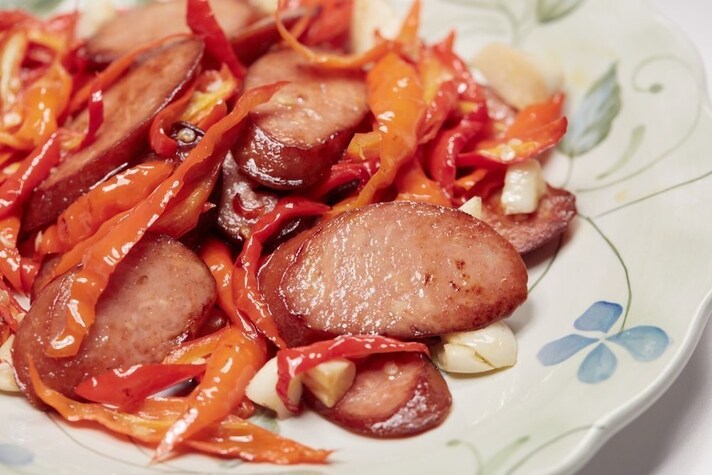What is Jinhua, the Ancient Chinese Prosciutto That Can Cost Up to 226$ Per Kg
Jinhua is a treasure of Chinese gastronomy, a unique and inimitable product that deserves to be known and appreciated. Its thousand-year history, its artisanal production process and its intense and aromatic flavor make it an exceptional ingredient, capable of enriching any dish with a touch of refinement and originality.
;Resize,width=742;)
If you are a cured meats enthusiast, you will surely have heard of Parma ham, San Daniele or Jamón Ibérico. But today I want to tell you the story of an equally prized ham, but perhaps even older: Jinhua, a true treasure of Chinese gastronomy. Originally from the city of Jinhua, in the province of Zhejiang, in eastern China, an area particularly suited to the production of this ham, thanks to the mild climate and the presence of a native pig breed, the Jinhua pig, characterized by thin skin and tasty meat. It is a raw ham with an intense flavor which, unlike Western hams, lends itself very well to being cooked. In general, the cost of Jinhua ham can vary between 100 and 226$ per kilo, depending on the quality and seasoning, and this is just one of the reasons why it is so difficult to find outside its borders. Let's look together at all the secrets of this unknown product.
The Origins of Jinhua Ham: A Thousand-Year History
The history of Jinhua ham has its roots in the thousand-year history of China. Legend has it that a general, returning from a victorious battle, brought with him some pork hams as a gift for the emperor. These hams, with an exceptional flavor, soon became famous throughout China, giving rise to a tradition that has been handed down for centuries.

The first real evidence of the production of this ham dates back to the Tang dynasty (618-907 AD): according to some Chinese writings, it was Marco Polo, having acquired the skills on site, who taught Europe how to make this product. In reality, hams, both cooked and raw, are foods with very distant origins, dating back to ancient Rome. We know this thanks to many findings, not least the excavations of Pompeii and Herculaneum, where traces of legs and actual recipes for the preparation of pork meat have been found. There are traces of cured hams as far back as the 6th and 5th centuries BC, with the Etruscan civilization, and Cato around 160 BC, in his De Agri Cultura, describes the process of salting the pork leg, in the way we make prosciutto today (net of some technological improvements). As a definitive confirmation of the contemporaneity of the two techniques, there is also via Panisperna in Rome, a street that has become legendary thanks to the group of physicists led by Enrico Fermi who revolutionized world science in the 1930s. Panisperna is a Latin compound name from panis (bread) and perna (pork leg) and is a reference to Roman hams.
Although it is most likely a cultural contamination that occurred unconsciously at some point in our history and Jinhua is not the "godfather" of European hams, we must nevertheless note that it is truly an ancient product. It is cited in numerous Chinese literature writings and is the protagonist of "The Dream of the Red Chamber", a very important novel of the Qing dynasty, the last Chinese dynasty before the fall of the empire due to the revolution. Curiously, it was precisely in the period immediately following the end of the Qing (1912) that Jinhua ham achieved international fame, winning the prize for best product at the International Exhibition of Panama in 1915.
How Is Jinhua Ham Made
The production of Jinhua ham is a long and meticulous process, requiring great skill and respect for tradition. The pork legs are carefully selected and subjected to a series of processes, which include salting, drying and curing, just like our most prized hams.

Salting is the most delicate phase, during which the legs are covered in salt and left to rest for a variable period of time, depending on their size. The salt is rubbed repeatedly on the meat left at a temperature between 41°F/5°C and 50°F/10°C, following a specific method that ensures uniform distribution. This process is repeated 5-7 times over the course of a month. Afterwards, the legs are washed and hung to dry in a cool, ventilated place. During the curing process, the legs are shaped to take on the characteristic bamboo leaf shape, then the hoof is removed and they are hung in the sun until they lose all the liquefied fat (this happens in about a week).
The legs are then hung again in low-temperature, humidity-controlled environments for 6-8 months before being cleaned and covered with a thin layer of vegetable oil to prevent oxidation. The entire process takes about 10 months of work but there are various technologies (for lower-quality hams) that reduce the time and bring production to a couple of months.
What Does Jinhua Taste Like and How To Use it In The Kitchen
Jinhua ham is distinguished by its pronounced, salty and umami-rich flavor, with sweet notes. The meat has a fine texture, with high levels of intramuscular fat that contribute to its succulence. The aroma is intense, with smoky and moldy hints, resulting from the long curing process and the presence of beneficial moulds. Jinhua ham occupies a prominent place in Chinese gastronomic culture. It is often considered a symbol of prestige and is used during celebrations and festivities, and has always been associated with the local aristocracy. Its production represents a centuries-old tradition that continues to be passed down from generation to generation.

The unique flavor of this product makes it very versatile: in China it is added to broths and soups to enrich their flavor and it is the main ingredient of the famous "Buddha Jumps Over the Wall", a delicious soup of Fujian cuisine. It is made up of thirty different ingredients including quail eggs, bamboo shoots, scallops, sea cucumber, abalone, shark fin, swim bladders, chicken, pork tendons, ginseng, mushrooms and taro. It takes two days to prepare it to perfection and Jinhua ham is the star ingredient. Obviously many eat it raw, thinly sliced like a Western ham.
Jinhua ham is not illegal in the U.S., but it faces strict import regulations. The U.S. Department of Agriculture (USDA) and the Centers for Disease Control and Prevention (CDC) regulate the importation of certain meats, particularly pork products, due to concerns over diseases like African swine fever.
While Jinhua ham is not outright banned, it must meet specific USDA and CDC import requirements. This typically includes undergoing certain processing methods to ensure safety. It’s important to note that some states may have additional restrictions, so it’s always advisable to check local regulations or with a reliable importer to ensure that the product can be brought in legally.
;Resize,width=767;)
;Resize,width=712;)
;Resize,width=712;)
;Resize,width=712;)
